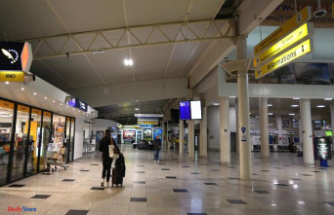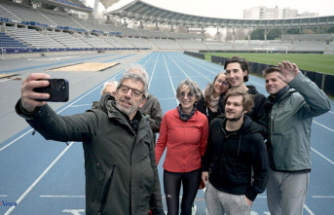Apply for a new job quickly during the train journey? You can do that with the one-click application. But how do you use the quick application most effectively? And where are strengths and weaknesses?
With just one click to your dream job: What many applicants have been hoping for for a long time should actually be possible with the one-click application.
In the quick application process, companies receive all relevant information via career platforms such as Linkedin or Xing. At the touch of a button, the candidate's CV, certificates or work samples are sent directly to the potential new employer.
But anyone who thinks that the one-click application will save them all hassle is wrong. "The effort involved in the actual application is very low. But I have to put in some effort beforehand so that this click doesn't come to nothing," says Jörg Stelzer, careers adviser at the Federal Employment Agency.
The application only has a chance of success if the applicant profile is up-to-date and complete and contains all relevant information: degrees, references, interests, qualifications and possibly work samples.
Inga Dransfeld-Haase, President of the Federal Association of Personnel Managers, advises: "Check what the most common search terms are in the job advertisements in your area, which of your key competencies you would like to show the company and align your profile accordingly."
It is even more important than with classic applications to avoid spelling mistakes. "Error devils are quickly recognized by the technology and lead to exclusion from the further application process," says Dransfeld-Haase.
The one-click application is used in particular for positions that are advertised in general, for which the basic data of the applicant is initially sufficient and no specific qualifications are required.
This can include, for example, job offers in the call center, as a forwarding agent or postman. "Larger companies also use the one-click process to set up talent pools," says Inga Dransfeld-Haase.
If the employer relies entirely on One-Click, the expert recommends using this application method. It can look different if more classic applications are also possible. "I would think about how I can best achieve my goal," advises Jörg Stelzer. "If I think my hard skills aren't enough, I can get more out of a classic application."
Skills such as strong communication skills, creativity or empathy could play a subordinate role in the computer-controlled quick application process. "Not everyone always has plus points on their CV," says Stelzer.
So far, an application has "always been advertising that you do for yourself" - with all the tricks, tricks and opportunities. "You could also get something out of it that might have been overlooked in a one-click application."
The following also applies to the one-click procedure: If the CV contains gaps or if a year is incorrect, there is a risk of automatic sorting out. In addition, the process could take longer than expected, says Inga Dransfeld-Haase. Although the company quickly has all the data at hand, it still has to get a comprehensive personal picture of the person in question.
In various cases, "One-Click" can be a good supplement to the classic application process, says Stelzer. "I see the greatest advantage in the fact that we are observing a change in the labor market as a whole," he says.
Instead of asking applicants to go through lengthy and multi-stage application processes, the new procedure is easier and faster for candidates. This also results in advantages for the company: the in-house human resources department can be relieved and the number of applicants increases.
Inga Dransfeld-Haase sees another advantage in the fact that the data ends up in the company's database with the applicant's consent. "Should a candidate not get a chance the first time, he can be considered next time through the existing contact."
But even if computers usually make the pre-selection in the one-click application, sooner or later a person will also look at the documents. Jörg Stelzer therefore recommends a trick that also applies to classic applications.
In his experience, consciously or unconsciously, people always work with the first impression. "If a photo is included in an application process that gives a good first impression, that's often an advantage." It increases the chances of being considered.












